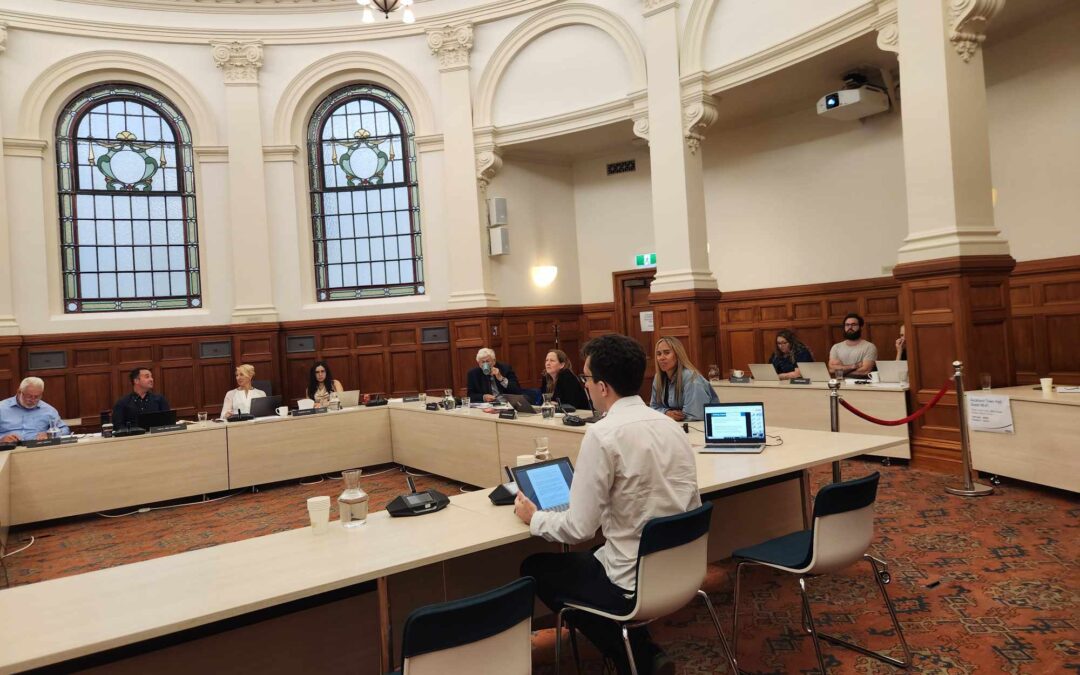Auckland Transport is rushing to reverse safe speeds across over 1500 streets across the city in compliance with the “Kafkaesque” new speed rule. This will disproportionately impact Waitematā where safe speed zones have been established around schools following strong community support. In addition Auckland Transport has applied the new rule too widely across Freemans Bay and Ponsonby.
At the the Waitematā Local Board meeting on 18 March, Connor Sharp from Greater Auckland and David Batten from the Grey Lynn Residents Association both presented on the reasons why safe speeds should remain and the reversals need to be challenged.
City Vision members put up a Notice of Motion to defend safe speed reversals. Here are Member Richard Northey’s speaking notes.
The purpose of this resolution is two- fold
First, to persuade Auckland Transport urgently to reassess its intended reversal of nearly all the speed limit reductions made by them, with this Board’s and a majority of the community’s, support, two years ago. AT ought to hold fire and identify those proposed reversals which are actually not required by the new speed rule; those that have objective evidence that reversing them would be unsafe and cause more serious crashes and injuries; and where the local community clearly supports the lower speeds
Second, write to endeavour to persuade the Minister of Transport and the Government that the wholesale undifferentiated reversal of the speed limit reductions is inappropriate, inconsistent and, in many cases, highly dangerous. The whole basis of making them needs to be reconsidered and, for the most part not proceeded with as a basis for speed limit policies, These decisions should be made by local communities and their elected representatives themselves.
What is happening is contrary to enhancing productivity; it is contrary to the safety of the public, and particularly to the safety of children; and it is fundamentally undemocratic.
Restoring unsafe speeds on our narrow residential streets will save less than a minute for the great majority of users. Commuters, shoppers and those visiting friends and family will have more crashes and, at the greater speed, they will cause more serious injuries. The crashes will congest both the roads and the hospitals. How on earth does that help productivity?
As far as the movement of freight is concerned, freight operators tell me that what is most important to them is reliability, that their goods will arrive at the right time planned time. The last thing they need is being held up by crashes and by more serious ones that take longer to clear.
Schools are allowed to have slower speeds but only for very short time windows around when schools are formally opening and closing. But children and adults come and go throughout the school day and for school sport in the weekend. 85% of crashes around schools happen during those unprotected hours and they need slower speeds then.
A major reason for the decision to have slower speeds through most of Ponsonby and Freemans Bay was specifically because they are residential streets much used by pedestrians and their narrowness and nature makes it unsafe for them to have a 50km/ hour speed limit. In these old narrow streets wing mirrors are regularly snapped off and smaller children are very difficult to see around the cars.
For our local schools, like Newton Central, walking to school is a real hazard. The Waitemata Local Board has for years seriously considered using its small Local Board Transport Capital Fund to make safety improvements to the roads around Freemans Bay and Newton Central Schools, but the costs involved, of over a million dollar each s were beyond our resources. The 30km / hour speed limit around Newton Central School simply and effectively massively reduces the risk of death and serious injury crashed to schoolchildren there and around other schools and are needed throughout their hours of operation
The leaders of our local schools, by 78%, want these lower limits as do a clear majority of the members of the communities affected, as shown during the original consultation. Government spokespeople say they want local boards people can decide what is best for the safety and wellbeing of our communities. Let’s reassess objectively and through asking the communities affected. And write to give the Minister the opportunity to reconsider these reconsider these reversals and policies where they are clearly wrong.

